When arranging forced ventilation systems, special mechanisms are used to ensure continuous pumping of air through the outlet ducts. Domestic and foreign manufacturers offer many models of such devices, differing in their design and a number of parameters. A special place in this series is occupied by a radial fan, which is part of modern ventilation systems.
Types and technical characteristics
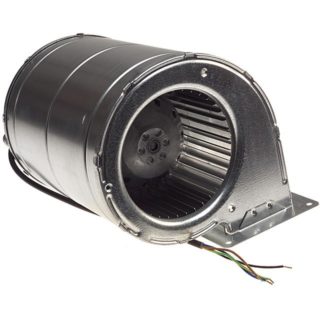
The radial centrifugal fan is available in several designs. Products are classified according to the following criteria:
- direction of air flow;
- the amount of pressure they create;
- direction of rotation.
In the direction of movement, all devices are divided into two large classes:
- double suction units;
- exhaust devices.
According to the magnitude of the pressure, the choice of products is more diverse:
- low level;
- with an average;
- with high pressure.
In the direction of movement of the fan shaft, the devices are with right-hand and left-hand rotation. The units also differ in the place of their installation: in-duct and remote.
Specifications
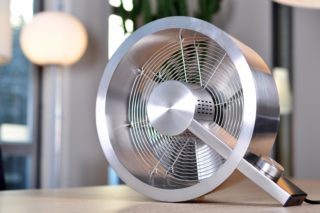
Ventilation equipment is characterized by the following indicators:
- power consumption from the network;
- type of current and value of supply voltage;
- indicator of noise of work;
- the quality of protection from dust, as well as from thermal and chemical effects;
- temperature Range.
Devices with a power of up to 5 kW are usually connected to single-phase current circuits with a supply voltage of 220 volts. More power-hungry fans will require a three-phase voltage of 380 volts for their power supply.
Radial fans, classified as devices with medium air flow pressure, are rated for resistance to chemical and other harmful substances. The maximum permissible dust concentration in the working environment of the duct should not exceed 100 mg / m3. In addition, the presence of explosive components, as well as particles of fibrous or sticky materials, is unacceptable.
Working principle and design
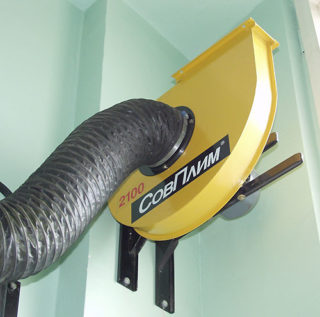
The principle of operation of radial fans is as follows:
- Contaminated air enters the unit inlet.
- Due to the rotation of the paddle wheel placed in the spiral casing, it is sucked in and moves under the action of centrifugal force.
- Air is collected in the housing of the device and redirected to the outlet.
Structurally, such a device looks like a wheel with blades, fixed on a bed with radial bearings and a shaft embedded in it (the latter is closed with a spiral casing). A typical electric motor is used for cycling. On the wheel, in addition to the blades, the rear and front discs, as well as a massive hub, stand out. The shape and number of blades depend on the purpose of a particular model.
Reverse-curved impeller wheels are installed in cost-effective product designs that consume approximately 20% less electricity. At the same time, they cope well with current air loads. On the other hand, samples with forward curved blades are much less noisy due to the lower engine speed.In addition, these models are characterized by reduced wheel and body dimensions of the entire device.
The difference between axial and radial varieties is evident in the history of their use by humans for practical purposes. The first ones appeared much earlier and are arranged somewhat differently. In products of this type, air masses move around the axis on which the fan blades are mounted. The air jets move in the same direction, which is set by the rotation of the rotor of the electric motor.
In radial devices, the direction of movement of the input and output streams does not coincide. The inflowing air jets are directed at right angles to the outgoing air flow and the axis of the engine.
Radial fan application
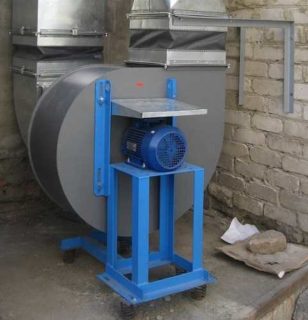
Radial centrifugal models are widely used at production facilities and in everyday life. They are in demand in places where, according to operating conditions, it is necessary:
- provide convection of air flows in the ventilation system;
- purify the air with high quality;
- manage humidity;
- create comfortable conditions for staying in the building.
The choice of a specific place where these units are used depends on the indicator of the pressure they create.
Designations according to GOST
There are several marking options for radial (centrifugal) fans, regulated by current standards. All models are distinguished by the magnitude of the generated pressure:
- low level (no more than 1000 Pa);
- medium size (1000-3000 Pa);
- high pressure (3000-12000 Pa).
Possible differences in the labeling of the same models are associated with changes in the current standard GOST 5976-90, which defines the rules for the formation of their designations, prescribed for execution by all users.
- Product designation - letter "B".
- Its type is the "R" or "C" icons (radial or centrifugal).
- The first number in the marking corresponds to the factor used to recalculate the total pressure (80, for example).
- The second digital designation is the speed of the unit.
- The last combination of numbers is the outer diameter of the impeller.
The VR-86-77-6.3 fan is deciphered as follows: a radial fan with a total pressure coefficient of 0.86. Its speed is 76.5, and the impeller diameter is 630 mm.
Selection rules

When choosing the right type of fan, the main attention is paid to units that consume a minimum of electricity and have a high efficiency in normal operation. Often, the factor that determines the choice of a particular model is the user's desire to reduce the size of the equipment, which is very important for maintaining free space in the kitchen. Having all the information about the characteristics of the working area above an electric or gas stove, you can choose the right model for a number of indicators.
For these purposes, special tables have been developed, which show the correspondence of the characteristics of a particular device to such parameters as total pressure "Pv" and productivity "Q". The latter indicator depends on the power of the built-in motor and determines the volume of pumped air per unit of time.
Main models and manufacturers
The most famous examples of radial fans from the VTs model range include VTs 14-46-4.0 brand products (1.5 kW / 1000 rpm) manufactured by Rowen from Russia. The presented model is characterized by the following technical parameters:
- Engine power: 1.5 kW.
- Unit capacity: 5400 m3 / hour.
- Mains supply voltage: 380 Volts (three-phase).
- Estimated cost of the product: 25 thousand rubles.
Another model presented on the domestic market is a portable floor fan of the "Mystery MSF-2406" type. It is also very popular among users who are attracted by the following technical characteristics:
- High power rating for its class (45 W).
- Built-in timer.
- Possibility of choosing one of 3 speeds.
- Low cost of the model: 1500 rubles.
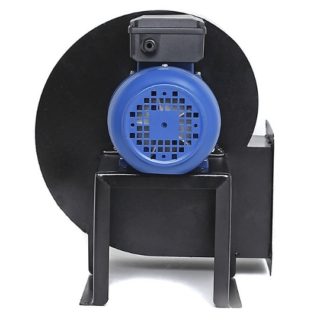
Radial fans "Snail" got their name from the spiral shape of the product body.
The most famous representative of this manufacturer is the VANVENT BP-16M-160 model.
Characteristics:
- The power of the product is 0.55 kW.
- Its productivity corresponds to 1700 m3 / h.
- Supply (operating) voltage - 230 Volts.
On the market, this model can be purchased for about 8 thousand rubles.








